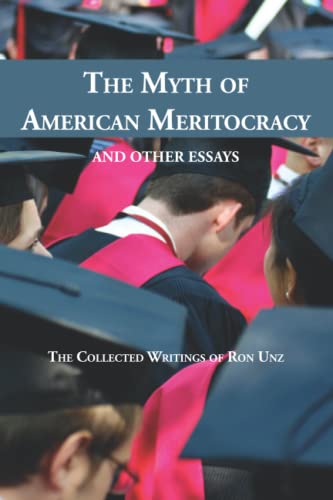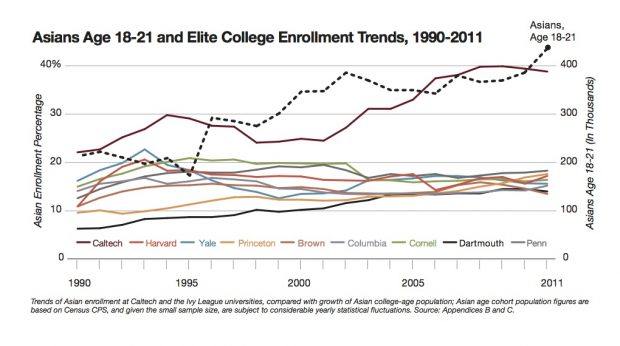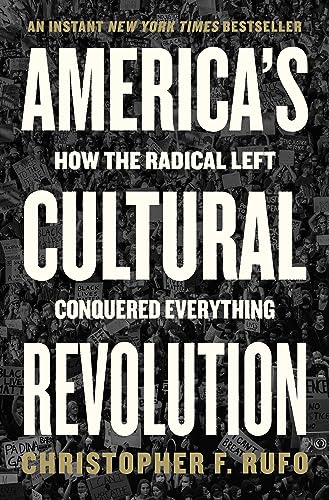Back when I was a young child my grandfather enjoyed watching professional wrestling on his old black-and-white television, so I occasionally did the same.
In those distant days, television wrestling possessed almost no money nor prestige and was barely even considered a real sport, probably tied with roller derby as occupying the bottommost-tier of audience viewership. Wrestling matches were only carried on one of the lowest-rated local television stations, unaffiliated with any network, whose managers desperately sought out anything they could find to fill their available broadcast hours.
The notion that wrestling might someday become a multi-billion-dollar national business enterprise would have seemed totally outlandish and ridiculous. Although a 1975 Hollywood science fiction film called Rollerball envisioned a future America in which a lethal version of roller derby had become the #1 sport, no one ever suggested anything similar for wrestling.

The Myth of American M…
Best Price: $25.99
Buy New $29.99
(as of 09:57 UTC – Details)
Although I’ve never watched a single wrestling match since the black-and-white shows of my childhood and those memories have faded, I think that they may have often featured tag-team contests, in which pairs of wrestlers faced off against each other.
If so, then our national headlines are now proclaiming a heavyweight wrestling match to determine the future of American higher education and perhaps our entire society as well. President Donald Trump is facing off against Harvard University in the greatest political bout of this young century, with each of those primary contenders backed by their chosen seconds.
Trump is a noted author, with more than twenty published volumes to his name, many of them high-profile bestsellers on business strategy, politics, and negotiation. But I’m not entirely convinced that he’s ever actually read a single book cover-to-cover in his entire life, even including any of his own, and if he did, I suspect that the last one may have been decades ago, perhaps filled with many colorful pictures.
Meanwhile, his main opponent in that match is America’s oldest university, now approaching its 390th year of existence, long ranked as the world’s wealthiest and most prestigious institution of higher education.
Trump’s loyal team-mate is his Secretary of Education Linda McMahon, the billionaire wrestling-lady, while Harvard is backed by Columbia University, still smarting from the brutal beat-down it recently received at the hands of the Trump-McMahon team before Harvard had entered the lists.
Although wealthy and very prestigious, Columbia still probably ranks a bit below the longstanding Harvard-Yale-Princeton triumvirate. Therefore the threatened loss of $400 million in annual federal funding a few weeks ago brought the university to its knees, forcing its administration to surrender on all the main points demanded.
Teams of federal agents were allowed to raid student housing and drag off any non-citizens suspected of criticizing Israel, the administration agreed to create a special unit of 30 campus security officers tasked with suppressing any public displays of anti-Zionism, and its prestigious Middle Eastern Studies program was placed in “academic receivership,” presumably intended to ensure that it became entirely pro-Israel in its teachings.
All these concessions were made by Acting President Katrina Armstrong, who afterwards resigned due to that horrific pressure she had endured, becoming the second president of Columbia to do so in just the last eight months.
So based upon this painful recent history, we are clearly seeing the sort of grudge match that has become wildly popular in pro-wrestling, with Columbia eager for its share of revenge now that it has mighty Harvard on its side.
In pro-wrestling as in other spectator sports, the onlookers can side with one of the champions or the other, or else merely enjoy the battle without taking sides.
Given Trump’s ignorance and the stupidity of his policies, most recently demonstrated by his Looney Tunes tariff proposals, I certainly couldn’t see myself cheering for him. But instead of remaining neutral, I’ve found myself entirely in Harvard’s corner.
My position might seem a bit strange given the harsh criticism that I’ve leveled at my alma mater over the years, even on some of the very matters that the Trump Administration is fiercely attacking.
For example, as far back as late 2012, I’d published a short piece arguing that Harvard had gradually transformed itself from a great academic center of learning into an enormous hedge fund with some sort of small school or something attached off to one side.
As I noted in a follow-up column a few days later, my criticism had deeply resonated in liberal journalistic circles, and during the years since then denouncing our elite universities as disguised hedge-funds has become widespread:
Late Friday afternoon, the piece was prominently featured on the Business Insider and CNBC websites, and soon redistributed on twitter by a large throng of individuals, some of them prominent journalists. MSNBC‘s Chris Hayes tweeted “very jealous I did not write this article” to his 175,000 followers, Pulitzer Prize winner Bart Gellman described it as “eye opening,” and New York Times economic policy reporter Annie Lowrey used the phrase “Harvard as a giant hedge fund plus a wee research university.”
Moreover, that particular piece had actually been published as a side-bar to my extremely long analysis of the admissions practices at Harvard and our other most elite universities, which together served as a direct funnel to the commanding heights of American academics, law, business, media, and finance. My statistics demonstrated that their admissions process had become hopelessly corrupt, and I summarized these conclusions.
In recent decades, elite college admissions policy has frequently become an ideological battlefield between liberals and conservatives, but I would argue that both these warring camps have been missing the actual reality of the situation.
Conservatives have denounced “affirmative action” policies which emphasize race over academic merit, and thereby lead to the enrollment of lesser qualified blacks and Hispanics over their more qualified white and Asian competitors; they argue that our elite institutions should be color-blind and race-neutral. Meanwhile, liberals have countered that the student body of these institutions should “look like America,” at least approximately, and that ethnic and racial diversity intrinsically provide important educational benefits, at least if all admitted students are reasonably qualified and able to do the work.
My own position has always been strongly in the former camp, supporting meritocracy over diversity in elite admissions. But based on the detailed evidence I have discussed above, it appears that both these ideological values have gradually been overwhelmed and replaced by the influence of corruption and ethnic favoritism, thereby selecting future American elites which are not meritocratic nor diverse, neither being drawn from our most able students nor reasonably reflecting the general American population.
The overwhelming evidence is that the system currently employed by most of our leading universities admits applicants whose ability may be unremarkable but who are beneficiaries of underhanded manipulation and favoritism. Nations which put their future national leadership in the hands of such individuals are likely to encounter enormous economic and social problems, exactly the sort of problems which our own country seems to have increasingly experienced over the last couple of decades. And unless the absurdly skewed enrollments of our elite academic institutions are corrected, the composition of these feeder institutions will ensure that such national problems only continue to grow worse as time passes.
Moreover, that particular piece had actually been published as a side-bar to my extremely long analysis of the admissions practices at Harvard and our other most elite universities, which together served as a direct funnel to the commanding heights of American academics, law, business, media, and finance. My statistics demonstrated that their admissions process had become hopelessly corrupt, and I summarized these conclusions.
In recent decades, elite college admissions policy has frequently become an ideological battlefield between liberals and conservatives, but I would argue that both these warring camps have been missing the actual reality of the situation.
Conservatives have denounced “affirmative action” policies which emphasize race over academic merit, and thereby lead to the enrollment of lesser qualified blacks and Hispanics over their more qualified white and Asian competitors; they argue that our elite institutions should be color-blind and race-neutral. Meanwhile, liberals have countered that the student body of these institutions should “look like America,” at least approximately, and that ethnic and racial diversity intrinsically provide important educational benefits, at least if all admitted students are reasonably qualified and able to do the work.
My own position has always been strongly in the former camp, supporting meritocracy over diversity in elite admissions. But based on the detailed evidence I have discussed above, it appears that both these ideological values have gradually been overwhelmed and replaced by the influence of corruption and ethnic favoritism, thereby selecting future American elites which are not meritocratic nor diverse, neither being drawn from our most able students nor reasonably reflecting the general American population.
The overwhelming evidence is that the system currently employed by most of our leading universities admits applicants whose ability may be unremarkable but who are beneficiaries of underhanded manipulation and favoritism. Nations which put their future national leadership in the hands of such individuals are likely to encounter enormous economic and social problems, exactly the sort of problems which our own country seems to have increasingly experienced over the last couple of decades. And unless the absurdly skewed enrollments of our elite academic institutions are corrected, the composition of these feeder institutions will ensure that such national problems only continue to grow worse as time passes.
New York Times columnist David Brooks soon ranked my piece as perhaps the best American magazine article of the year, a verdict strongly seconded by a top editor at The Economist. The Yale Political Union and the Yale Law School invited me to give a couple of public lectures on that controversial conclusion and the rest of my Meritocracy analysis. A very long list of other writers and public intellectuals commented on my article, an overwhelming majority of them quite favorably, with their discussions appearing in Forbes, The Atlantic, The Washington Monthly, Business Insider, and various other publications. These included such prominent public figures as Harvard Prof. Niall Ferguson and Fareed Zakaria.
One of my central findings had been the existence of very strong quantitative evidence that Harvard and the other Ivy League schools were practicing racial discrimination by surreptitiously maintaining Asian Quotas in their admissions policies, and this soon prompted the New York Times to organize an important symposium on that explosive topic in which I eagerly participated. My graph demonstrating the extremely suspicious convergence of Asian enrollment throughout the Ivies was very widely distributed across the Internet, including being republished by the Times, and seemed to constitute “smoking gun” proof of what had long been a widely held suspicion.

As I explained in my Times piece:
After the Justice Department closed an investigation in the early 1990s into charges that Harvard University discriminated against Asian-American applicants, Harvard’s reported enrollment of Asian-Americans began gradually declining, falling from 20.6 percent in 1993 to about 16.5 percent over most of the last decade.

America’s Cultur…
Best Price: $5.77
Buy New $12.97
(as of 09:51 UTC – Details)
This decline might seem small. But these same years brought a huge increase in America’s college-age Asian population, which roughly doubled between 1992 and 2011, while non-Hispanic white numbers remained almost unchanged. Thus, according to official statistics, the percentage of Asian-Americans enrolled at Harvard fell by more than 50 percent over the last two decades, while the percentage of whites changed little. This decline in relative Asian-American enrollment was actually larger than the impact of Harvard’s 1925 Jewish quota, which reduced Jewish freshmen from 27.6 percent to 15 percent.
Conservative circles took considerable interest, with Charles Murray highlighting my analysis, and a few weeks later I published a piece in National Review arguing that my findings might provide legal grounds for the Supreme Court to overturn its 1978 Bakke decision that laid the basis for decades of Affirmative Action policies:
Indeed, the following year a group of Asian-American plaintiffs filed their lawsuit challenging Harvard’s admissions system as discriminatory. Their case spent the next decade wending its way through federal court, then on June 29, 2023 their effort culminated in a decisive 6-to-3 Supreme Court ruling overturning Bakke after 45 years. That judicial thunderbolt largely eliminated the legal basis for affirmative action in college admissions and many other areas of American society.













